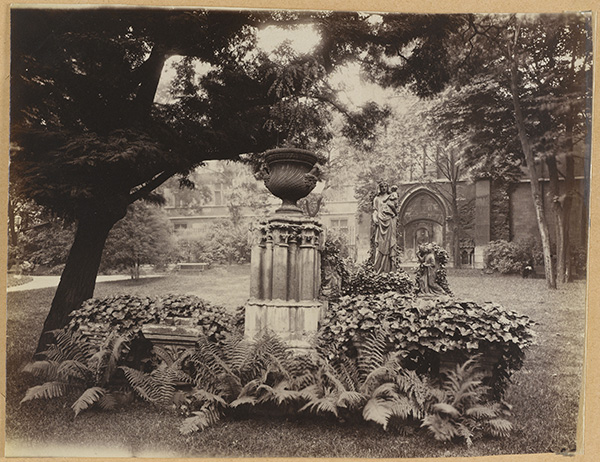Hizb ut-Tahrir, Spain and Copyright: on Sunday 31 May 2009 I photographed a march by Hizb ut-Tahrir against attacks by Pakistan army on Taliban militants in Swat and then went to the ‘Taste of Spain’ festival in Regent Street, which led me to think and write about the copyright position over reproductions of works of art.
As I pointed out then, if works of art are out of copyright because of their age – now because the artist died over 70 years ago – then any reproduction of them “intended to be a faithful 2D representation” lack “the the artistic intent necessary for copyright to exist and so is also in the public domain.“
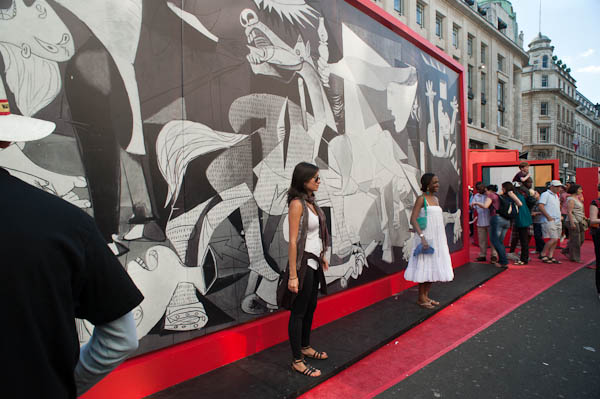
I wrote in 2009:
However copyright lawyers in the employ of many museums and photographic agencies who make money selling or licencing art reproductions take a rather different view of intellectual property law.
A judgement in the UK Court of Appeal in 2023 clarified the situation as far as the UK is concerned, confirming that photographs of two dimensional artworks which are out of copyright are indeed also in the public domain, and that museums and collections etc can no longer use copyright to restrict the circulation of images or make any charge for doing so.
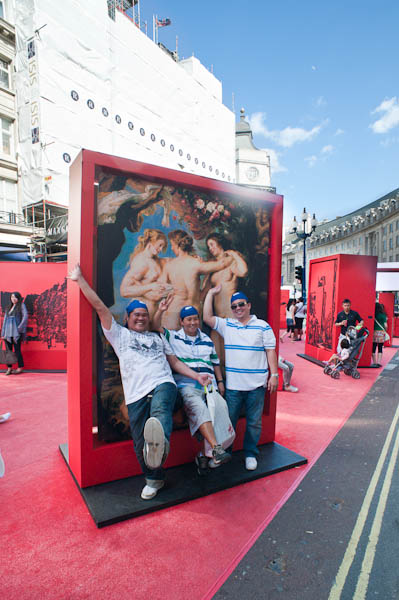
We are now free to ignore any © symbols on images made by artists (including photographers) who died more than 70 years ago. Of course museums and others can still make a charge for supplying high resolution images, but if you can find large enough files on the web or by scanning reproductions in books they are yours to use, free of charge, thanks to THJ v Sheridan, 2023.
Hizb ut-Tahrir protest US War in Pakistan – US Embassy – Pakistan High Commission
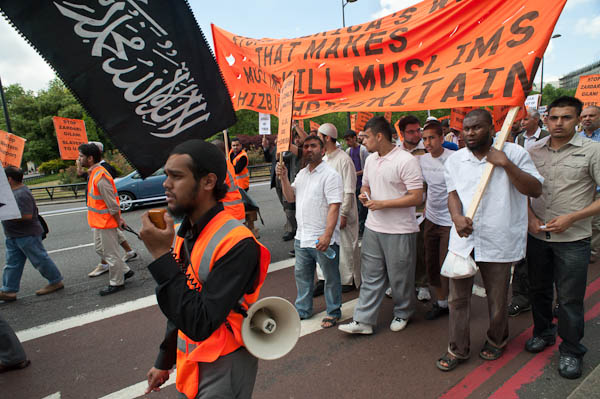
Hizb ut-Tahrir Britain was proscribed as a terrorist organisation in the UK in January 2024 after it organised protests which supported Hamas following their October 7th attack on Israel. I had been concerned about their activities since I first photographed them over 20 years earlier.

They marched from the US Embassy to the Pakistan High Commission in protest against the attacks by the Pakistan army on Tehrik-i-Taliban Pakistan militants who had taken control of parts of the Swat Valley. They called this an “American War”, blaming them on American pressure on the Pakistan government and called for an immediate end to attacks by Muslims on Muslims.

I ended my report on the protest with a long criticism of Hizb ut-Tahrir Britain calling on them to “have a proper respect for human rights, including the rights of women, although an Islamic interpretation of this may well differ in some respects from a Western one. It’s very hard not to agree with Hizb ut-Tahrir when it talks about the corrupt regimes currently leading Muslim countries, but it would also be welcome to see them standing against repression – and in particular the repression of women – that is currently practised in places including Swat and states such as Iran.”
More on My London Diary at Hizb ut-Tahrir protest War in Pakistan.
Spanish Practices in Regent St
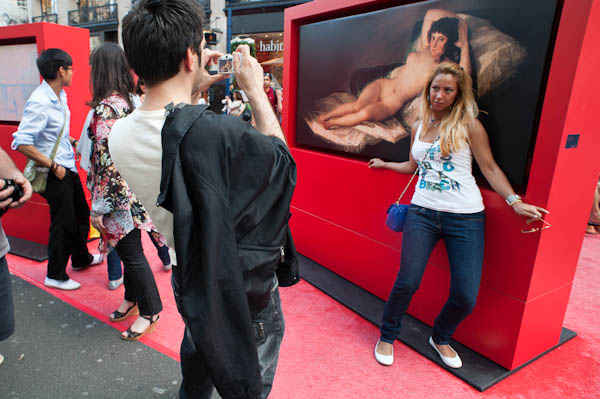
The most impressive part of the ‘Taste of Spain’ festival in Regent Street was the display of large photographs of pictures from the Prado in Madrid which largely attracted attention because of the female nudity in some of the works (and it’s a shame that Ruskin had apparently not studied this work in detail before his wedding night, which might then have been less of a shock to his system.)
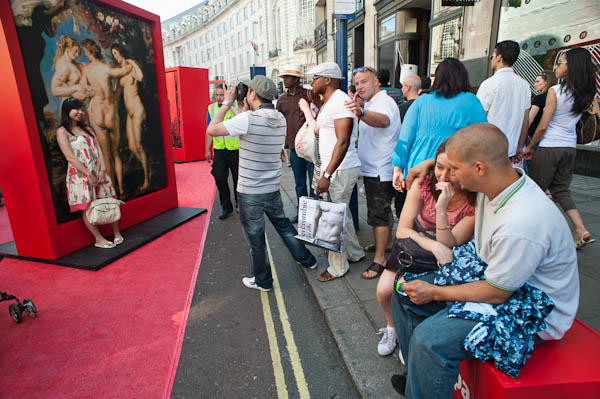
Quite a few people posed in front of it to have their picture taken – but by their friends rather than by me, but I and other photographers took advantage of this.

More pictures at Spanish Practices in Regent St.
Flickr – Facebook – My London Diary – Hull Photos – Lea Valley – Paris
London’s Industrial Heritage – London Photos
All photographs on this page are copyright © Peter Marshall.
Contact me to buy prints or licence to reproduce.
